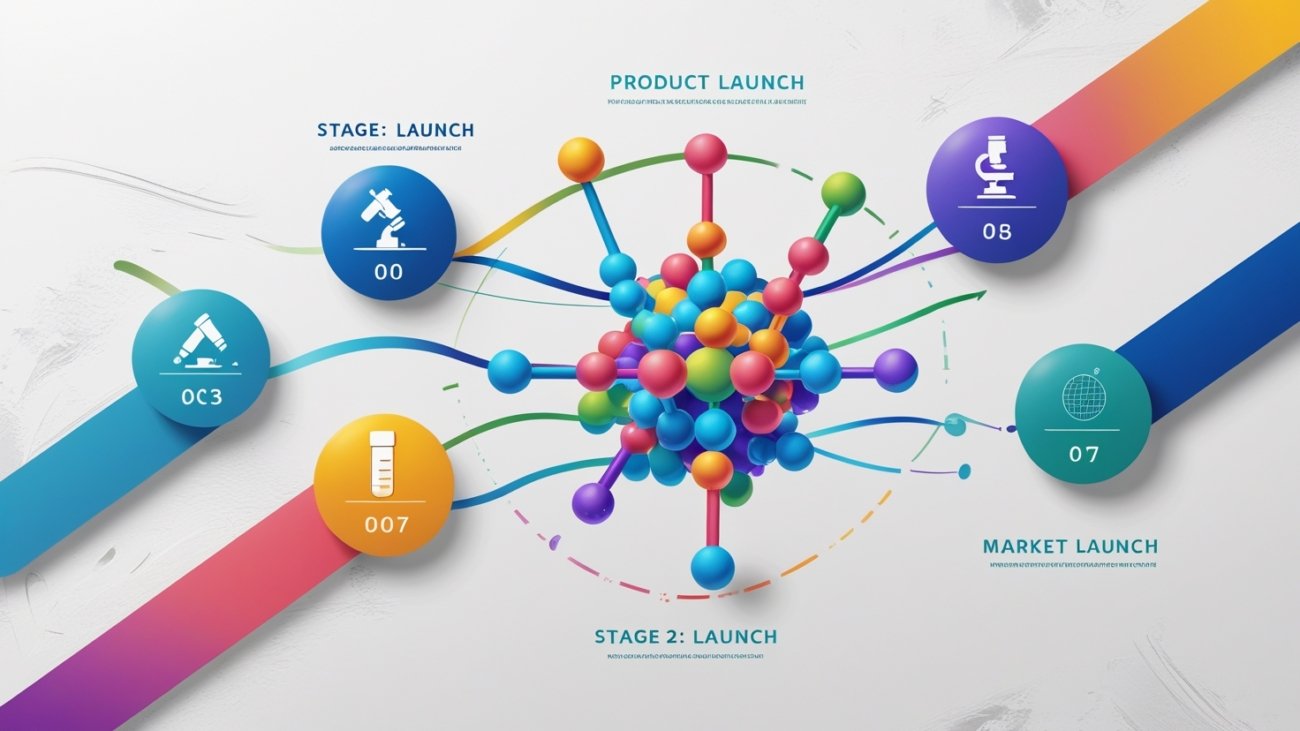
Launching a pharmaceutical product is a complex, high-stakes journey that transforms years of research and development (R&D) into a life-changing medicine available to patients.
A successful launch requires meticulous planning, regulatory compliance, and innovative marketing to ensure the product reaches healthcare professionals (HCPs) and patients effectively.
Why a Strategic Product Launch Matters
A well-executed product launch can:
– Accelerate Market Adoption: Ensure HCPs and patients embrace your medicine quickly.
– Maximize ROI: Recover R&D investments through strong sales.
– Build Trust: Establish your brand as a reliable provider of innovative treatments.
– Enhance Patient Outcomes: Deliver medicines to those who need them most.
Let’s explore a step-by-step blueprint to take your pharma product from R&D to market success.
Step 1: Pre-Launch Preparation
The foundation of a successful launch is laid long before the product hits the market.
Pre-launch activities focus on aligning R&D, regulatory, and commercial strategies.
Actionable Tips:
– Define Your Value Proposition: Clearly articulate how your medicine addresses unmet needs. For example, does it offer fewer side effects or a novel delivery method?
– Regulatory Alignment: Ensure compliance with regulations like the FDA’s New Drug Application (NDA) process or the EU’s Marketing Authorization Application (MAA).
– Stakeholder Mapping: Identify key stakeholders — HCPs, payers, pharmacies, and patients — and tailor strategies for each.
Interactive Tool:
Create a Launch Readiness Checklist to track pre-launch milestones.
Step 2: Develop a Robust Go-to-Market Strategy
A go-to-market (GTM) strategy outlines how your product will reach its audience.
It integrates marketing, sales, and distribution efforts.
Strategies:
– Targeted Marketing: Create campaigns for HCPs (clinical data-focused) and patients (benefit-focused). Use platforms like X to share educational content with hashtags like #PharmaLaunch or #HealthInnovation.
– Sales Team Training: Equip your sales team with interactive e-learning modules on product benefits, side effects, and competitive differentiators.
– Distribution Channels: Partner with wholesalers, pharmacies, or direct-to-consumer platforms (where permitted) to ensure accessibility.
Creative Idea:
Launch a Virtual Launch Event with live demos, HCP testimonials, and Q&A sessions. Stream it on X and your website to engage global audiences.
Step 3: Engage Healthcare Professionals
HCPs are critical gatekeepers in the pharma ecosystem.
Their endorsement drives prescriptions and patient trust.
Tactics:
– Scientific Symposia: Host webinars or in-person events to present clinical trial data and real-world evidence.
– KOL Partnerships: Collaborate with key opinion leaders (KOLs) to advocate for your product within regulatory guidelines.
– Interactive Tool: Develop a HCP Education Portal with downloadable resources and quizzes.
Step 4: Empower Patients with Education
Educating patients ensures proper usage and builds brand loyalty.
Strategies:
– Patient Support Programs: Offer apps or websites with medication reminders, side effect trackers, and support hotlines.
– Accessible Content: Create multilingual videos, infographics, or FAQs explaining your medicine’s benefits and usage.
– Community Engagement: Use X to share patient stories and host Q&A sessions with hashtags like PatientEmpowerment.
Creative Twist:
Develop a Patient Journey Map an interactive tool visualizing the patient experience from diagnosis to treatment.
Step 5: Ensure Regulatory Compliance
Compliance is non-negotiable in pharma launches to avoid penalties and protect patients.
Key Considerations:
– Labeling and Claims: Ensure all promotional materials comply with FDA, EMA, or local regulations.
– Adverse Event Reporting: Set up systems to monitor and report side effects post-launch.
– Transparency: Share clinical trial data openly to build trust.
Innovative Idea:
Create a Compliance Tracker Dashboard to monitor regulatory requirements in real-time.
Step 6: Monitor and Optimize Post-Launch
Post-launch analysis ensures your product continues to perform and meet market needs.
Metrics to Track:
– Prescription Rates: Monitor adoption by HCPs and patients.
– Patient Feedback: Use X polls or surveys to gather insights.
– Sales Performance: Track revenue against R&D investment.
Creative Optimization:
Host a Post-Launch Innovation Lab, a virtual workshop where your team and stakeholders brainstorm ways to improve marketing, distribution, or patient support.
Challenges and Solutions
– Challenge: Slow HCP adoption.
— Solution: Offer free samples or CME-accredited training to build familiarity.
– Challenge: Regulatory delays.
— Solution: Engage regulatory consultants early to streamline approvals.
– Challenge: Patient access barriers.
— Solution: Partner with payers for reimbursement or offer patient assistance programs.
Conclusion
Launching a pharmaceutical product is a transformative journey from R&D to market that requires strategic planning, stakeholder engagement, and regulatory diligence.
By leveraging interactive tools, creative marketing, and patient-centric strategies, you can ensure your product reaches those who need it most.
Use this blueprint to navigate the complexities of a pharma launch, starting with small, targeted efforts and scaling with data-driven insights.
Your medicine has the potential to change lives — launch it with confidence and impact.


My developer is trying to convince me to move to .net from PHP. I have always disliked the idea because of the costs. But he’s tryiong none the less. I’ve been using Movable-type on numerous websites for about a year and am nervous about switching to another platform. I have heard good things about blogengine.net. Is there a way I can transfer all my wordpress posts into it? Any kind of help would be greatly appreciated!